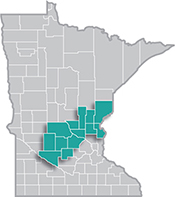 Central Minnesota is a manufacturing stronghold, with several global manufacturing firms operating there.
Central Minnesota is a manufacturing stronghold, with several global manufacturing firms operating there.
The region is especially well known for its expertise in food processing, printing, furniture manufacturing, appliances, machinery and heavy equipment manufacturing.
View our latest blogs on CareerForce. Want the freshest data delivered by email? Subscribe to our regional newsletters.
7/19/2023 9:00:00 AM
Luke Greiner
Despite rapid and broad changes in the economy and labor market following the COVID-19 pandemic, most occupational changes have so far been minimal. Though people working in many occupations are now able to work from home and serve customers remotely, the actual function of most jobs has remained unchanged. Yet long-term changes in our economy will continue to shape the labor market for decades and interpreting job growth and job demand is imperative to understand for proper planning.
Many education and workforce development organizations place a large emphasis on job growth to direct current planning goals, and rightfully so. Knowing what areas of our economy are expected to grow is very important. However, current demand and needs should be considered with just as much significance. The reasons become evident when looking at the top ten most in demand occupations in Central Minnesota.
DEED's Occupations in Demand results were updated in July 2023, providing a listing of the highest demand occupations in each region of the state. The top two most demanded occupations in Central Minnesota are Fast Food Workers and Home Health Aides (HHA) and Personal Care Aides (PCA), due to large numbers of existing workers and current position vacancies. Both occupations are also projected to grow faster than average (+5.0%) in the region over the next decade.

In contrast, the third, fourth, and fifth most in demand occupations – which are Cashiers, Retail Salespersons, and First-Line Supervisors of Retail Sales Workers –are actually expected to see job declines over the same period. However, even if they don't grow, they will still have thousands of job openings due to labor market exits and retirements by existing workers.
So what does this mean for companies, workers and the organizations that help provide skill training? Basically, the overwhelming size of some occupations will require large numbers of workers to fill the plentiful job openings projected over the coming years. This pushes demand higher for the occupation, while also providing excellent opportunities for workers.
Just because an occupation isn't expected to grow doesn't mean it's a vanishing occupation. In fact, employers might be increasing the quality of an occupation, but decreasing the number of jobs by replacing the most tedious, dangerous, or repetitive tasks with technology.
Job seekers and career counselors should look beyond the growth rate when considering what occupations provide opportunity now and in the future. Current demand is important as well, since most workers probably don't care if there is projected to be 3% less employment in a decade, but they do care about the quantity of openings available and if the occupation is and will be in demand.
Contact Luke Greiner, Labor Market Analyst, at luke.greiner@state.mn.us